Construction
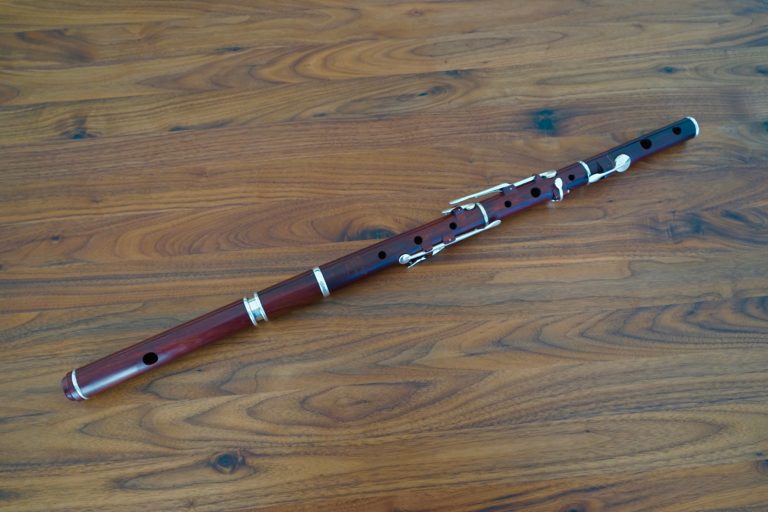
Equipment
All of my flutes include the following:
- Tuning slide
- Screw mechanism to adjust the position of the flute stopper
- Silver rings
- Cork-mounted tenons (except for polymer flutes)
- Reinforcement ring for the upper tenons (except for polymer flutes)

The head
The head of the flute is fitted with a metal tube, but this is kept as short as possible. The aim is to have as much wood as possible in contact with the air column, thereby preserving the characteristic timbre of the wood used.
Each instrument is fitted with a mechanism which allows you to precisely adjust the position of the flute stopper using a screw. The stopper is made from polymer. The side in contact with the column of air is carefully machined to produce a flawless surface.
The standard stopper positions are measured from the centre of the embouchure.
Rudall & Rose : 21.5 mm
Pratten : 19mm
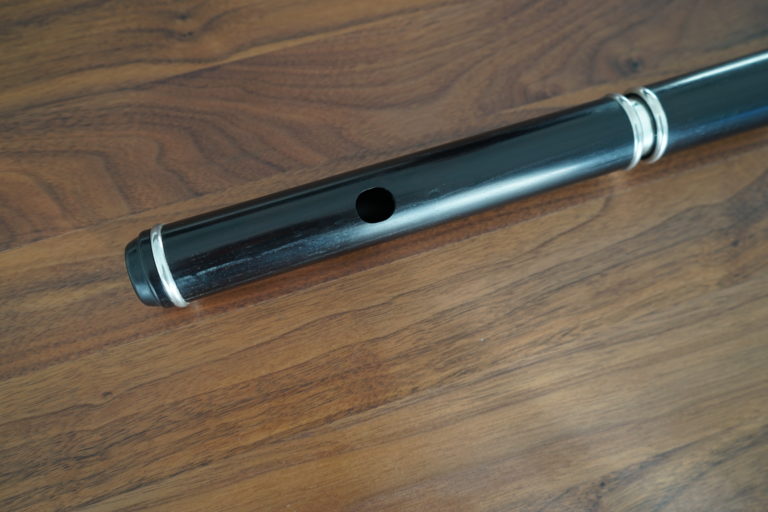
The embouchure
A wide embouchure allows for more volume and more flexibility than a narrow mouthpiece, but requires more air.
Conversely, a narrow embouchure has a lower volume and less flexibility, but creates a centered timbre, accentuates the harmonic depth and will require less air.
The mouthpiece that I shape on flutes is medium in size and gives a good compromise between the pros and cons of the two extremes.
Concerning embouchures, I’ve noticed that musicians grow accustomed to their instrument – and particularly their embouchure – to get the most out of it. It’s almost as if the instrument is shaping the lips of the musician.
When a musician tries out a new instrument, they tend to look for an instrument with similar properties to their current one. This will influence them and limit their choice. Sometimes, the musician will instinctively compensate for their instrument’s tuning, and will sub-consciously do the same on other instruments.
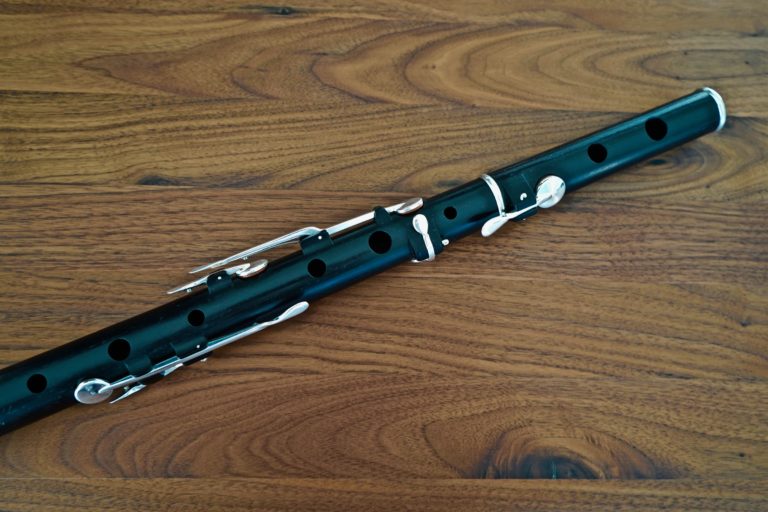
The keys
The keys are made from laminated brass or nickel silver plate. They are cut along the grain to provide a more rigid structure.
They are then forged and formed by hand, and the cap is then welded to the lever. The keys are then polished and silver-plated. The keys are mounted onto blocks on the instrument, which are machined into the wood.
The pads of the keys are leather pads used in clarinets (this is also the case for the springs). I chose this approach to ensure that they could easily be replaced by woodwind instrument workshops.
Only wooden flutes can be fitted with keys.
The following keys are available:
E♭, F♮ short right hand, F♮ long left hand, G#, B, C♮

Rings
The rings are made from rolled silver wire, individually soldered and adjusted to the ends of the instrument. These rings help the instrument resist any expansion from humidity and temperature variations, and provide added resistance to impacts.
Wood
Mopane (Colophospermum mopane) :
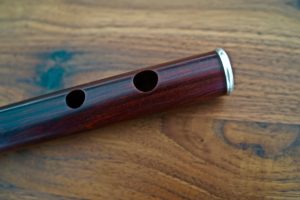
This is an extremely stable wood with good resistance to humidity. It is as dense as African Blackwood, and is brown-red with beautiful black veins. I prefer using this wood, as it is tougher than Blackwood.
African Blackwood (Dalbergia melanoxylon – Grenadille – African black wood) :
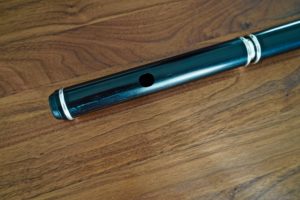
This extremely dense black wood is traditionally used for wind instruments.
Since January 2017 this wood has been listed as an endangered species (CITES II – Convention International Trade Endangered Species). Trade in this wood is now regulated. However, an exception was adopted for musical instruments during the CITES conference of the parties (Geneva (Switzerland), 17-28 August 2019).
While it is still possible to obtain this wood for flutes, using it requires jumping through a series of administrative hoops, and this is not why I do what I do.